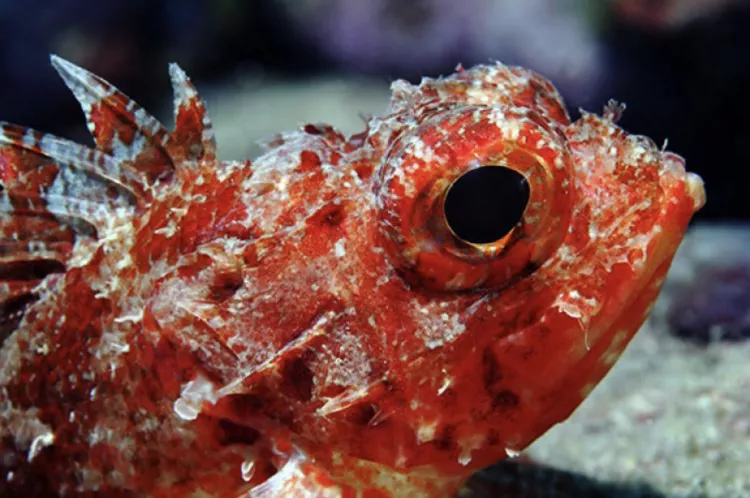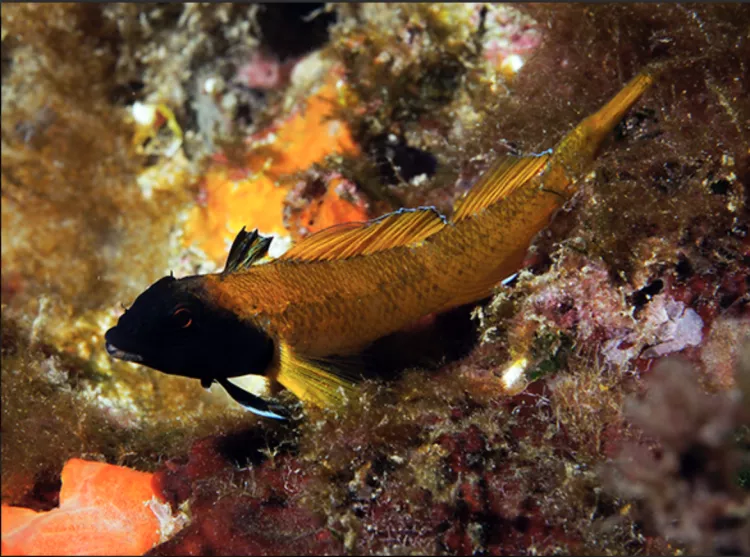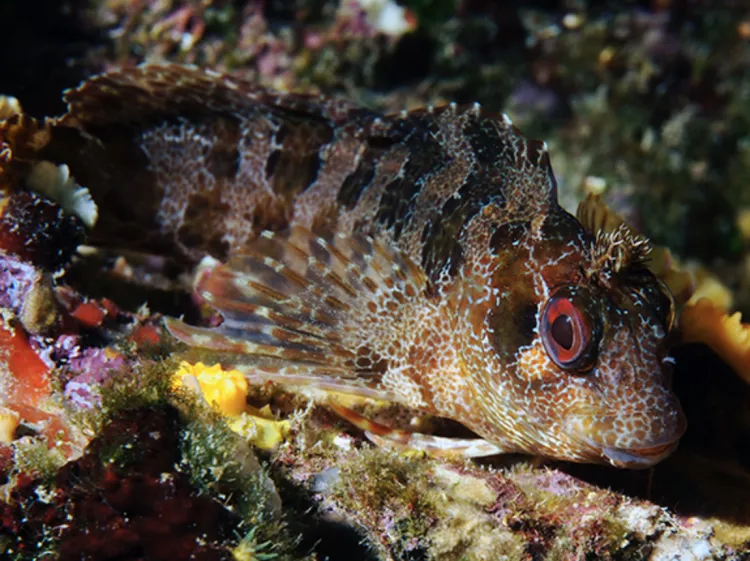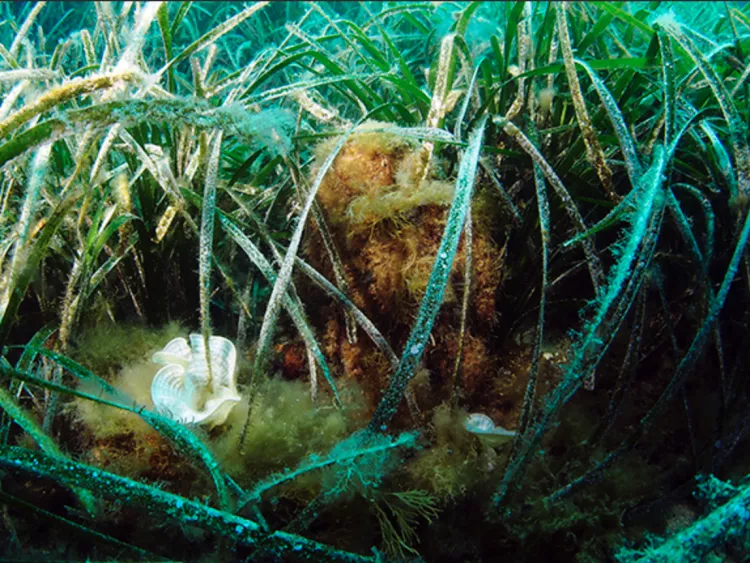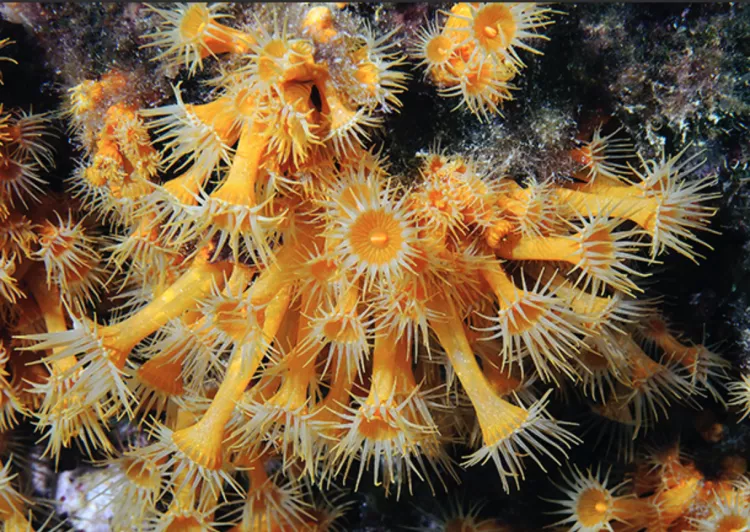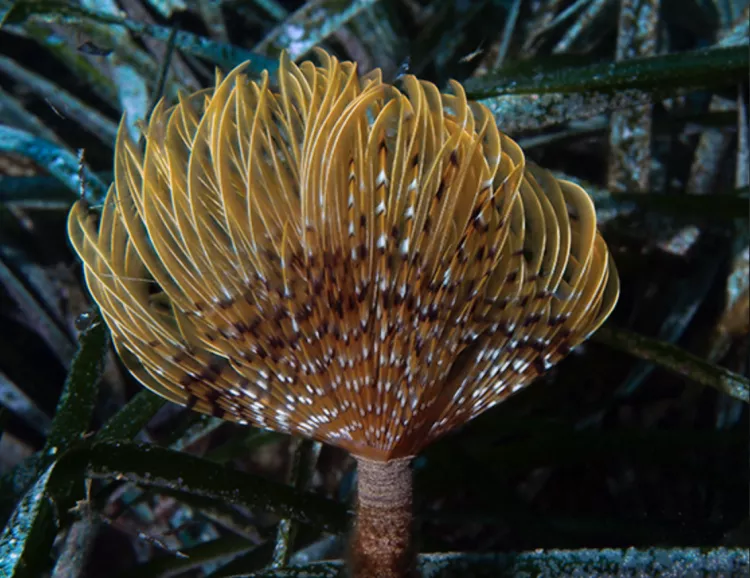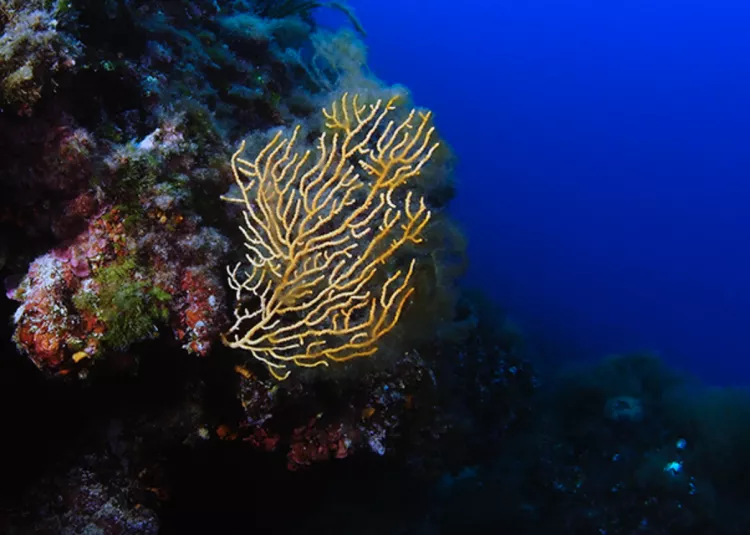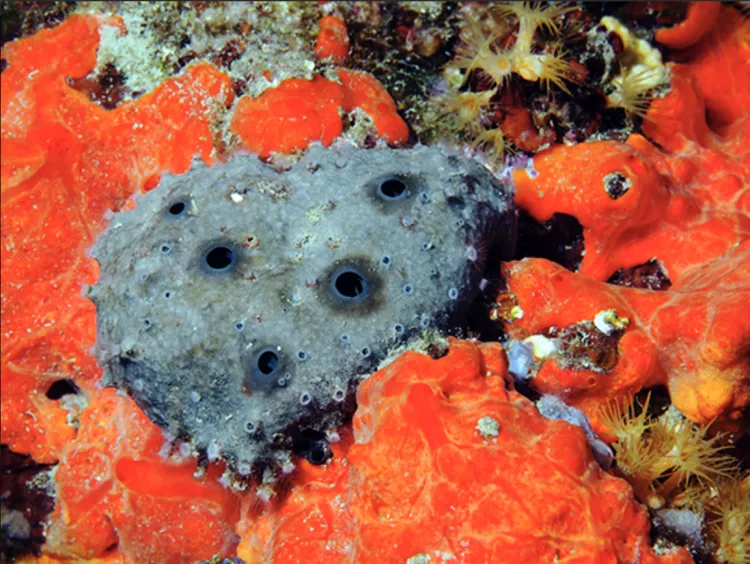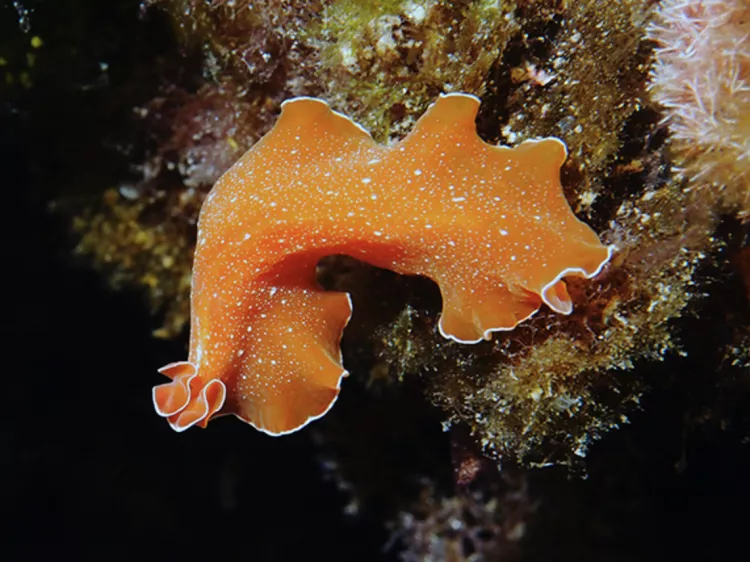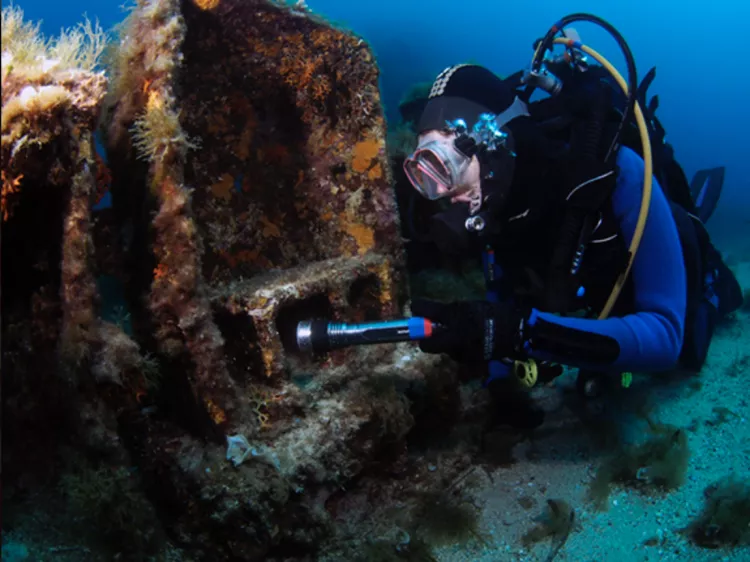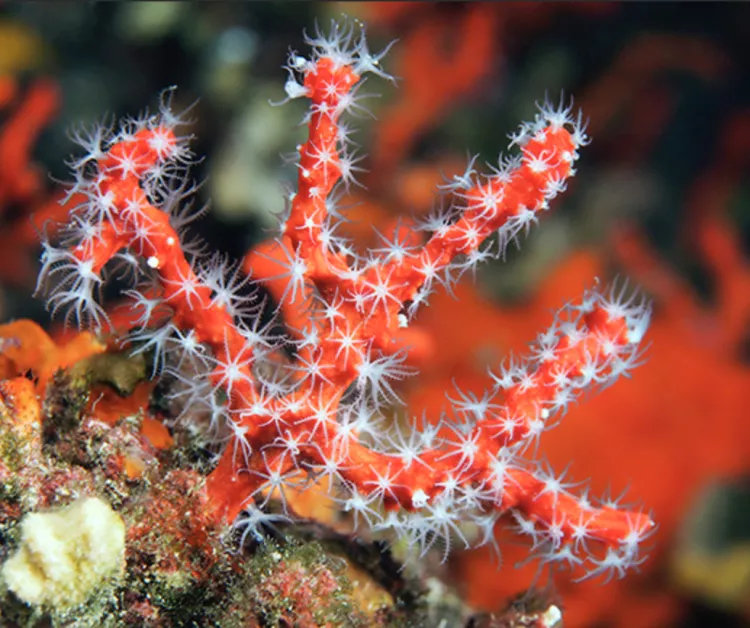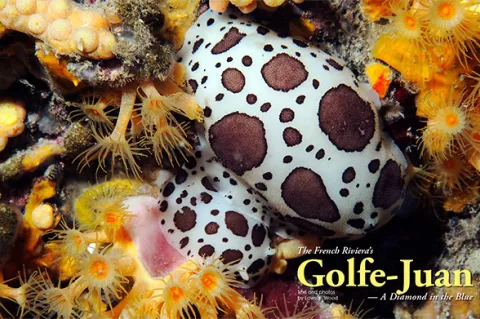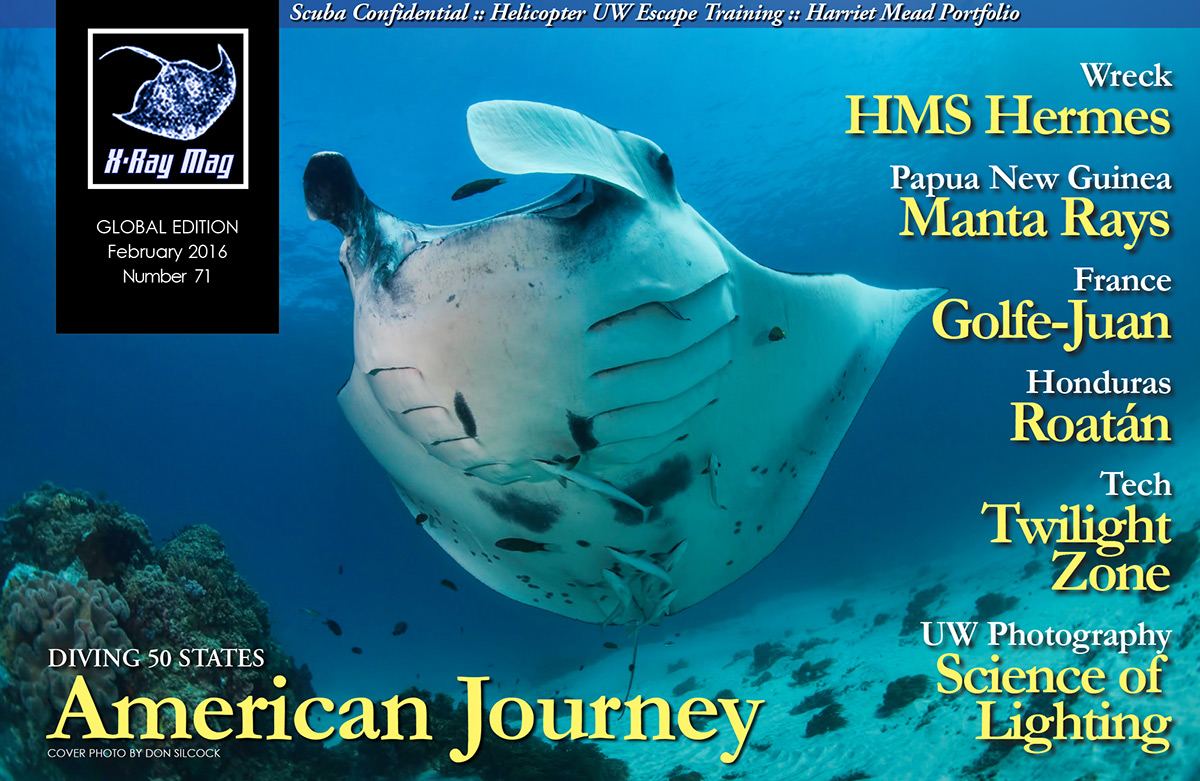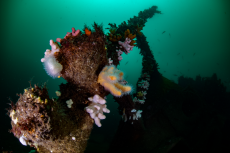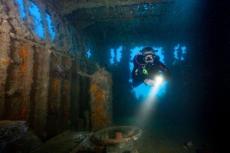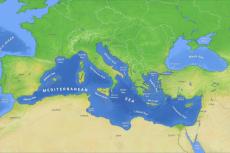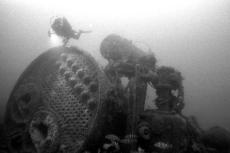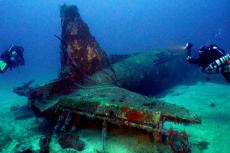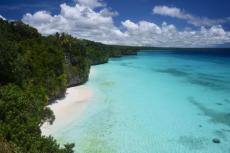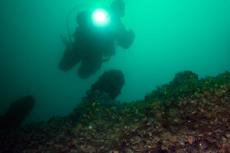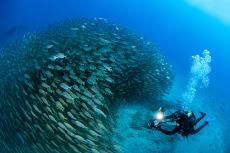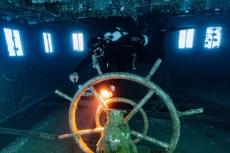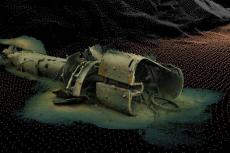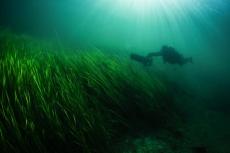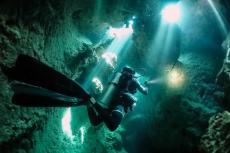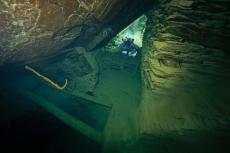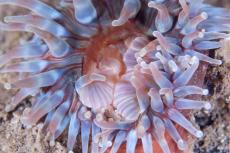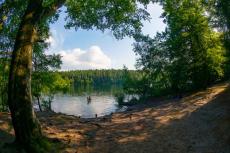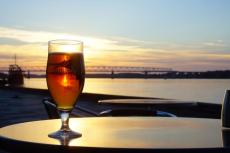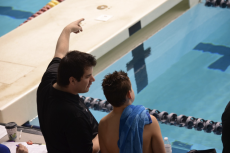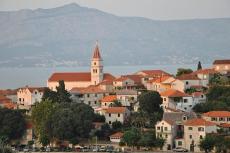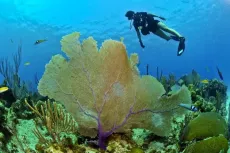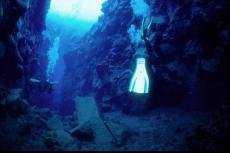If you are in Europe and like the idea of a short flight to Southern France and diving on the same day you arrive in the Mediterranean, then perhaps you may want to try the seaside resort town of Golfe-Juan—just a short ride west from Nice. Average journey time to Nice for flights from all over Europe is only two hours. My wife, Lesley, and I chose to fly EasyJet from Edinburgh.
Contributed by
One small side street away from the old port in Golfe-Juan is Diamond Diving. In operation since 2006 and catering to holiday groups, local divers and running instruction courses, the centre’s two dive RIBs (rigid-inflatable boats) take divers to sites primarily between Cap d’Antibes and Les Îles de Lérins—the islands to the south (Île Sainte-Marguerite and Île Saint-Honorat).
The dive centre’s RIBs are kept in the marina directly in front of the shop where divers kit up and cross the street under the envious and watchful eye of the tourists who sit in the various restaurants overlooking the port—a great place for lunch between dives or for those après-dive drinks at the end of the diving day. We can recommend La Sirene on the prom, overlooking the dive boat mooring, and La Stella di Gigi at the new port (Port Camille Rayon) where the lovely Stella di Gigi runs a superb restaurant and Pizzeria.
Depending on the schedule and the number of clients, the dive center offers either a single tank dive in the morning and another in the afternoon, or you may do a twin tank dive in the morning and get back into port around 1:30 in the afternoon, giving you plenty of time for lunch and exploring the nearby towns of Antibes, Juan-les-Pins and Vallauris the rest of the day or just ogling the super-yachts.
The diving
La Furmieve. Located midway between Cap d’Antibes and Les Îles de Lérins is an isolated series of rocky pinnacles topped by an automated lighthouse called La Furmieve or “La Fourmigue”. There are literally over ten different dives to be had here, and in the usual constant tidal stream, there are many filter feeders evident, such as sea squirts and small gorgonian sea fans.
Just off the lighthouse is a pinnacle, which almost comes to the surface and features a huge swim-through between two massive boulder outcrops called La Grotte de Miro. There is a statue at the base of the grotto, now well-encrusted with algae and small sponges.
In the shaded areas are superb congregations of yellow cup corals (Parazoanthus axinellae and Leptosammia pruvoti), small specimens of precious red coral and lots of cardinal fish. Chromis and several species of bream are all around, as are the ubiquitous wrasse.
Le Dromadaire. Further out is Le Dromadaire, which starts at 15m (50ft) and plunges down over 65m (220ft). The outer wall is riddled with narrow clefts where purple gorgonians (Paramuricea clavata) proliferate. Look closely and you can usually find winged oysters on their outstretched fans. Rare long-spined sea urchins (Centrosphanus longispinus) and the Mediterranean anthias are also found here, and as long as you are prepared for a 30-35m (100 – 120ft) dive, you will have a great time.
The shallower rocky surfaces tend to be covered in various algae, grazed on by saup (Sarpa salpa) and numerous varieties of wrasse and bream. Various nudibranchs are plentiful such as the leopard doris (Discodoris atromaculata) and the tricolour doris (Hypselodoris tricolor). Schools of barracuda are found here and the water column is filled with fish.
Miniature village. To the north of La Furmieve and back towards Golfe-Juan are the remains of an old film set. The tiny village, only 15cm (18 inches) high, was supposedly the home of a mermaid in this rather unambitious and amateurish video. The small buildings are now very dilapidated and rather tumble down, covered in algae, encrusting sponges and small corals.
What are much more interesting are the rare giant sea pens (Pinna nobilis), which can be found amidst the sea grass beds. These fan-shaped shells are over 30cm (1ft 3 inches) tall and are indicative of good clean waters. The more common blennies found on all of the rocky overhangs are the black-headed blenny (Trypterygion delaisi) and the tompot blenny (Parablennius gattorugine).
Cap d’Antibes. To the northeast of the bay, Cap d’Antibes has a large plateau which spreads out nearby the famous Eden Rock Hotel where the glitterati stay during the Cannes Film Festival. This ancient limestone plateau is a labyrinth of huge boulders topped with sea grass. With the water here being so clean, visibility is usually in the 20m range, but this also means that the sea grass does grow down to around the 21m (70ft) contour.
La Seiche Saint Pierre and Rascoui are two of the most popular sites and are largely undercut in many places, where there are conger eels, moray eels, spirograph tube worms (Spirographis spallanzani) and plenty of brilliant red cardinalfish (Apogon imberbis).
Much of the rocky substrate is dominated by an enveloping shroud of brown algae, but the rocky terraces are usually clear of this invasion and the gorgonians are thriving. Anthias are found only in deeper waters, and in the further recesses of the caves, you can also find large grouper. Sadly, we found a staked fishing net, which had clearly been in the water for quite a few days, and encountered trapped scorpionfish (hardly a delicacy). Needless to say, we relieved them of their plight!
Île Sainte-Marguerite. To the southwest on the outer cliff off Île Sainte-Marguerite, the visibility was around 25m (83ft) and there was none of the enveloping brown algae evident. (Some of the shallower sites in the bay get smothered in the spring plankton bloom, but this usually disperses quite quickly as the water warms up).
The pale gorgonian sea fans (Eunicella cavolinii) were everywhere, their branches extending out into the current. Large grouper were evident in a number of rocky overhangs as were small octopus, common shrimps and squat lobsters.
The deeper caverns had leopard-spotted gobies (Thorogobius ephippiatus—just like home in Scotland) and there were plenty of wrasse and bream. All of the shaded underhangs were covered in encrusting sponges, cup corals, bryozoans and hydroids—a superb dive.
Le Robuste II. There is one wreck known in the bay called Le Robuste II, which sank at the end of World War II and lies in 27m (90ft) of water at its deepest point at its propeller. This former cable barge is very well broken up now and her wooden structure is largely collapsed. She is over 30m (100ft) long and had a beam of around 7m (24ft).
This wreck is not so popular with non-photographers, but is a delight for finding small blennies, gobies and various crustaceans. The propeller, cable wheels, mooring gear, bollards and condenser are recognisable and virtually every surface is covered in encrusting sponges and small cup corals, hydroids and bryozoans.
The dive operator
Diamond Diving has two 6m RIBs and can accommodate 16 divers, arranging up to three tours daily, depending on the schedule and experience of divers. The operator runs three IDC courses per year for a maximum of five candidates. Whilst introductory courses and advanced courses are available, students are encouraged to go down the e-learning curve and complete their theory courses online prior to travel, then complete their open water dives here in the Mediterranean.
Having plenty of new and well-serviced equipment, you actually do not need to bring any of your own gear if you are struggling with weight restrictions.
Similar to the services offered in many areas of the Caribbean, for those visiting in their own yacht (!) or have chartered a yacht, Diamond Diving has the full rendezvous diving set-up sorted out and will coordinate trips with you in mind. Those arriving on cruise ships also have plenty of time to reach the dive shop and have a dive before continuing on their tour.
Getting there
There are flights from all of the major cities in Europe that fly directly into Nice, and even from our northern Edinburgh, the flight was only two hours. Leaving with EasyJet at 7:00 a.m. was early, but we got into Nice by 10:00 a.m. local time (which is one hour ahead).
From Terminal 2, you can catch the free transfer bus to Terminal 1 and then a 10-minute walk (500m or so) will take you to the St Augustin railway station where both high-speed (TGV) and regional trains (TER) are operated by the national state-owned railway, SCNF. Here, the train goes directly to Golfe-Juan and stops in the centre of town, very close to the port.
Just 200m to the left is the Hôtel le Provence where we stayed (rather impersonal and run down, but convenient), and 200m to the right and towards the port is where the dive operator, Diamond Diving, is located—so easy to find.
Alternatively, you can catch bus No. 250 from outside the arrivals hall at your terminal and this travels south through Antibes, Juan-les-Pins, and arrives in Golfe-Juan 45 minutes later. The bus stop is also just up from the railway station, so it is perfect all round and certainly saves you the expense of taxis or hiring a car and negotiating the sometimes confusing Côte d’Azure coastal road. For larger groups, the dive shop owner, Alex Diamond, will arrange a mini-bus transfer and save you all of the hassle. ■
The author thanks Alex Diamond of Diamond Diving (www.diamonddiving.net), Noémie Broglio, Christof and Anna Ryan.
Lawson Wood is a widely published underwater photographer and author of many dive guides and books. For more information, visit: www.lawsonwood.com.
Published in
-
X-Ray Mag #71
- Läs mer om X-Ray Mag #71
- Log in to post comments

